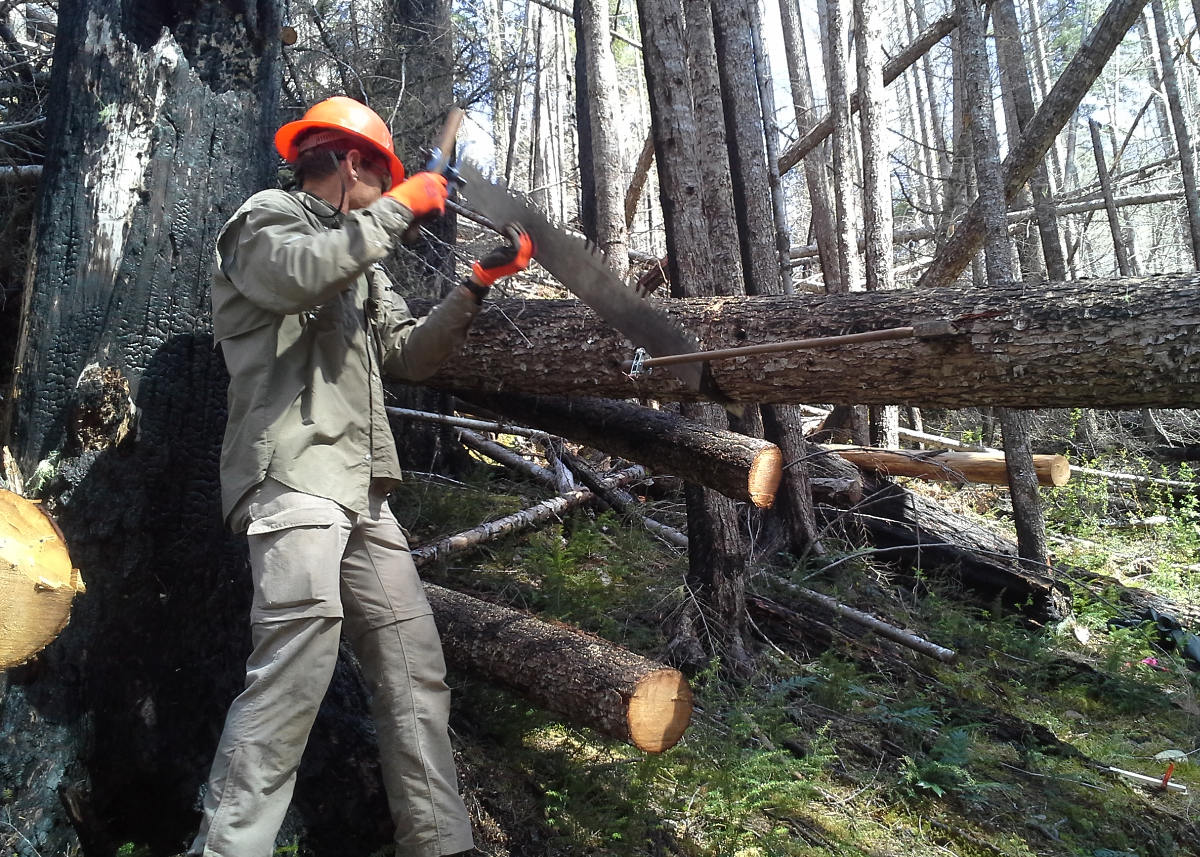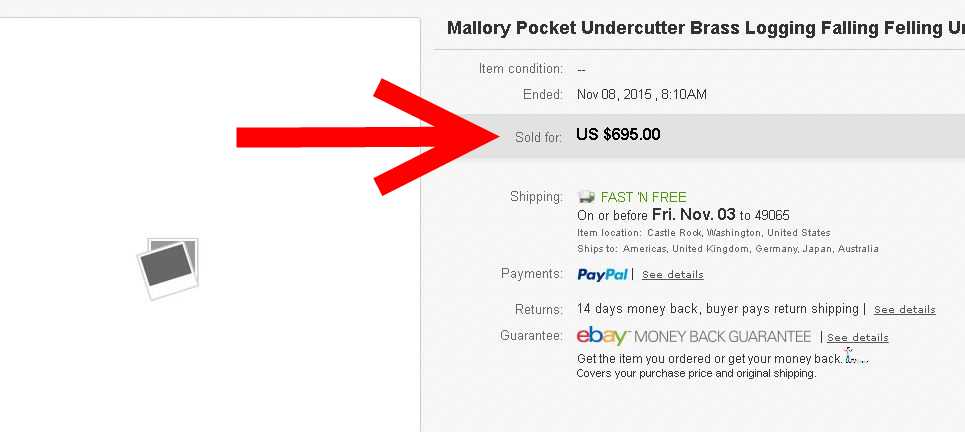In the 1950's we were still using crosscut saws for felling. Chainsaws were still big, heavy, and problematic. The first power saw I was allowed to use was a Wright reciprocating saw, not a chain saw. In felling with a crosscut you almost never had to underbuck if you knew what you were doing felling large trees. If we did need to underbuck (because some kid like me was not paying attention) we just used the butt end of a DB haft to rest a one man crosscut on. I never heard of a underbucking tool until much later. Now trail work with blow down is a different story, and I believe this is where the underbucking tool came into being.
Back to the DB haft method. We carried a special DB with one bit sharpened to stick and the other bit sharpened to swamp out around the trees to be felled. For underbucking you stuck the bit so the crosscut would ride only on the butt end of the haft. This of course left grooves in the haft, but only where your hand was stationary, not where your hand needed to slide when you needed the swamping out bit. We also always carried a SB rafter to drive wedges.










